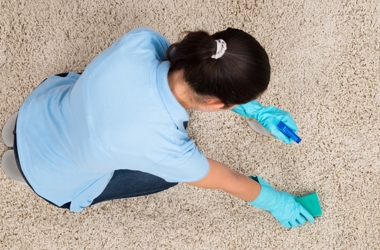The Perfect 3 Step Carpet Maintenance Plan
If you are responsible for the maintenance of a commercial carpet – this blog post is for you. This simple 3-step guide will cover the most important factors to include in your maintenance plan.
After a new carpet is installed, the need to implement a maintenance programme from the beginning is incredibly important. However, even if your carpet is older, implementing and following a maintenance plan can really help in the restoration and preservation of the original appearance.
1. Barrier Matting
Barrier matting is a highly effective preventive measure that consists of using protective external and internal matting.
With outside matting you need soil removal mats that are capable of scraping debris off shoes and have the capability to hold that dirt. All weather, coarse types are best, as they are able to brush soil from shoes.
Interior matting should remove smaller particles of dirt. We would recommend water absorbent mats to help prevent any liquid or oil from getting to your carpet.
TIP: Keeping car parks, paths and entrances clear and clean will help with cutting down the tracking in of debris.
For your barrier matting to continue to trap dirt they should be cleaned on a regular basis – in fact more frequently than your carpet! If accumulated soil is not removed your mats can become overloaded and will no longer work in preventing soil from entering the building.
TIP: Add barrier mats around lift and stair entrances, as well as food and drink stations in order to prevent as much soiling as possible from finding its way onto carpets.
2. Spot Removal
Spots and spills are inevitable, but they don’t have to be permanent. Having an immediate reaction plan in place goes a long way in helping prevent irreparable damage. Deal with any spillage as quickly as possible, the longer the delay the more likely the spill could turn into a permanent stain.
Liquid spills should be blotted dry with a dry, absorbent, white cloth or white paper towels. (never use coloured cloths because you run the risk of transferring some of the colour to the carpet).
With solids that typically do not cause stains, gently scrape them up – if a spot occurs follow your procedure for spot removal using a high quality carpet spot remover product.
For dry spills - all you need to do is vacuum. Adding any liquid may spread the spill deeper or further creating more issues.
3. Vacuuming
Effective, routine vacuuming is a must for maintaining a clean commercial carpet. Carpet has a unique ‘filter-like’ trapping feature that holds airborne particles. The only way to remove these trapped partials is using a high-powered vacuum cleaner.
When buying a vacuum, never be led by cost alone. Instead look out for durability; this will help reduce long-term costs with maintaining and replacements. Also consider efficient filtration – the best type of vacuum cleaners offer high airflow, high filtration and an adjustable rotating brush.
Each location is different but we would recommend your schedule to include vacuuming high traffic areas daily, or more frequently if needed. Vacuum moderate traffic areas at least three days each week, with light traffic areas at least once a week.
Where any doubt exists with how to best clean your carpet we would recommend checking with the carpet manufacturer.
For more information on our innovative method for carpet cleaning maintenance, click here .



